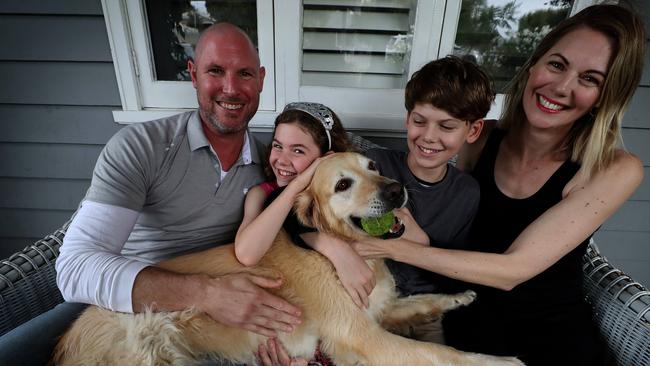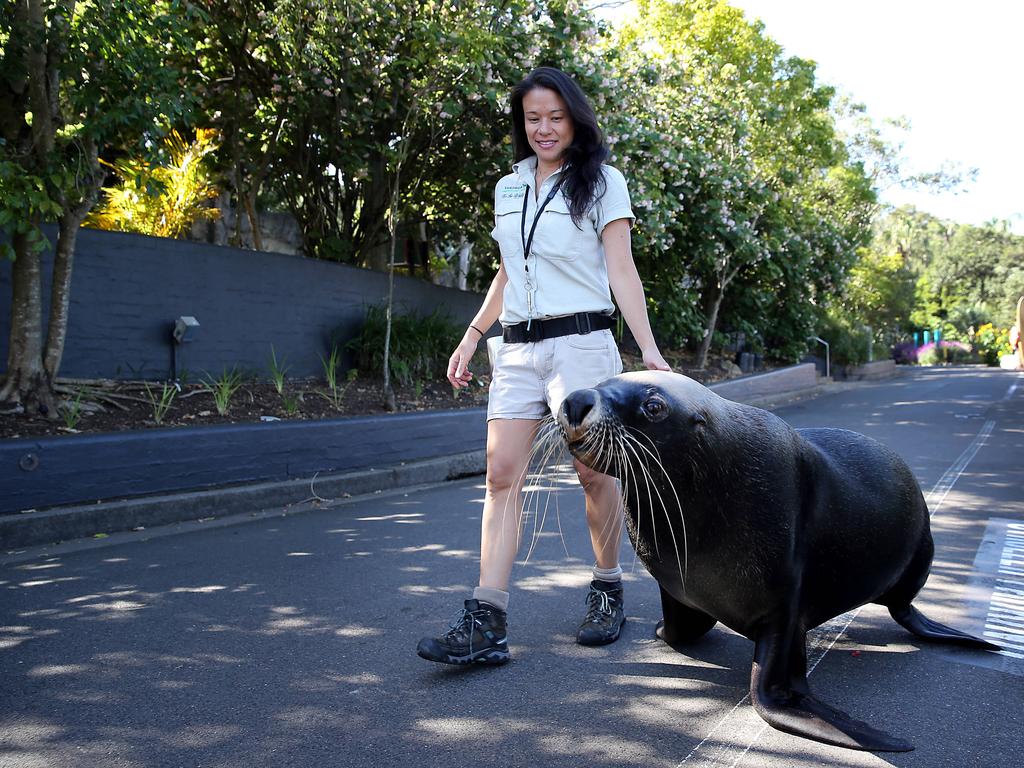Coronavirus: Life’s golden now, but pets’ crisis starts soon
The attention being lavished on dogs during the coronavirus shutdown could be setting pampered pooches up for a world of anxiety.

The attention being lavished on dogs during the coronavirus shutdown could be setting pampered pooches up for a world of anxiety when their owners return to office life.
Trainer Kayla Rocco said she’s predicting a spike in canine stress when social-distancing restrictions end and dogs used to having their owners working from home found themselves suddenly alone.
She said dogs were creatures of habit who were likely to be in for a shock when their humans suddenly were absent for at least eight hours a day.
“Dogs love routine (and) they’ve already been with their owners three weeks now,” Ms Rocco said. “So to suddenly have owners gone for eight hours is going to cause this massive anxiety and panic of ‘Where’s Mum? Where’s Dad?”
Otis the golden retriever has never had so much company.
“And he loves it,” says Samson Pozzi, aged 11. “He’s been thoroughly enjoying the attention.”
Before the coronavirus pandemic, six-year-old Otis lived the life of a typical city dog in a busy family — he was home alone often in the Perth suburb of Bayswater and relished his daily walk to school or to the park.
Now Samson and his sister Olive, 8, can play with him any time, and Otis likes to sit in on video conferences in the home office of their father, Jarrad, state territories manager of orthaepedic medical supplier DJO Global.
Their mother, Jane Millington, estimates she and her team are working harder than ever from their homes, but the state manager of corporate furniture supplier Zenith Interiors says there is something lovely about having the family around, including Otis.
“We are just together more, which is great for us and for Otis,” Ms Millington said.
Ms Rocco, who runs private training school K-9 Cardio in Melbourne’s bayside St Kilda, said she’s been advising her clients to ensure their dogs get enough alone time to prevent separation anxiety when life and work returned to normal.
“Otherwise as soon as their owner returns to work, they’ll start to stress out … I expect there will be a lot of separation and anxiety issues happening when they all go back,” she said.
“My advice would be to get the dog to engage in activities in another room without you so they’re not just relying on you to entertain them and be there with them.”
Ms Rocco said she could already see the impact of increased owner at-home time on some of the dogs she trained.
“Some dogs have become really clingy to their owners and quite anxious when they’re away from the owner,” she said.
“The other alternative is they’re absolutely happy to get out of the house to go play with other dogs … there’s definitely two ways it’s turning, it depends how the owner is approaching the situation.”
K-9 Cardio client Lee Wurlod, 37, said his dog Boz was already a bit clingy but he wasn’t overly worried about the shock when he stopped spending all his free time with his six-year-old staffie.
He said he knew staffies tended to be a bit sooky before he bought Boz as a puppy, and had trained him to be comfortable in his absence.
“I’d go out for a minimal period of time and it got gradually longer,” he said, “just so he would get used to it. By the time I went to work, he was fine.”






